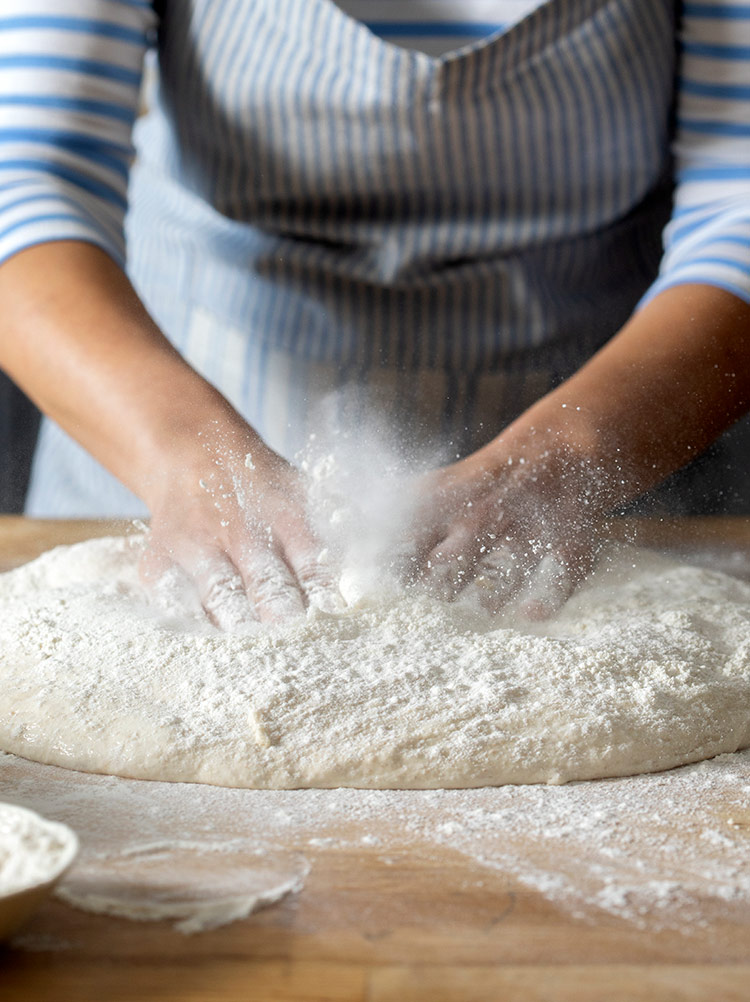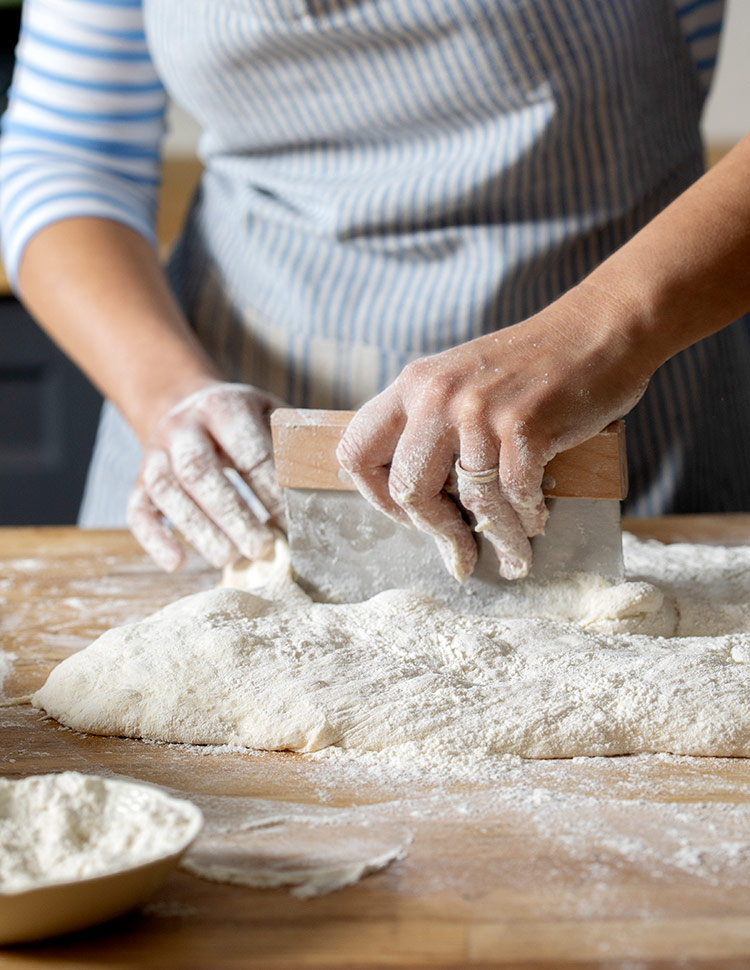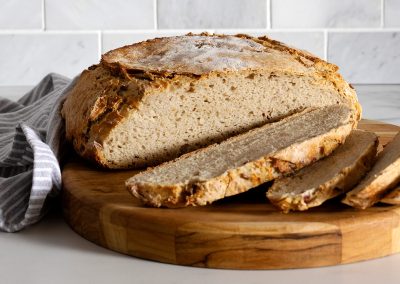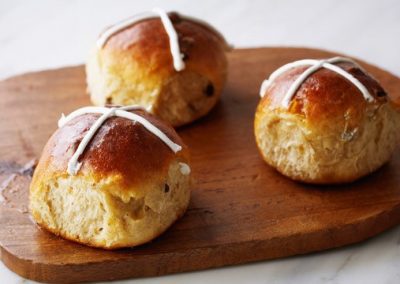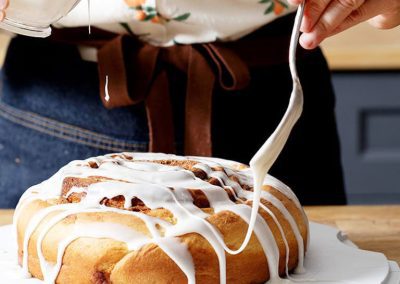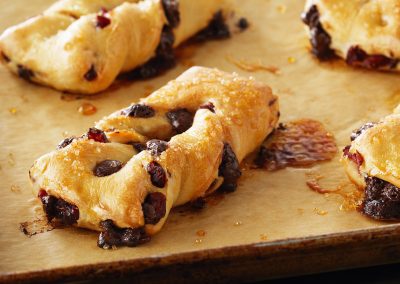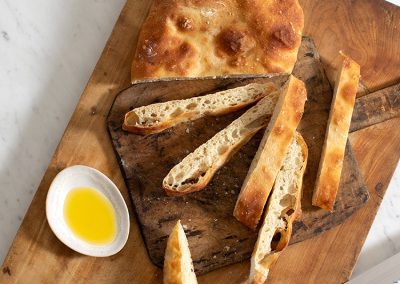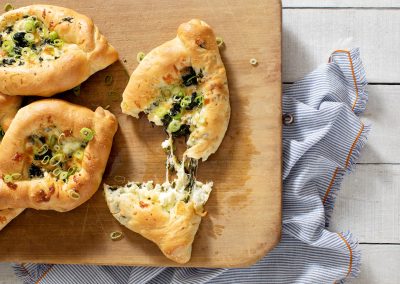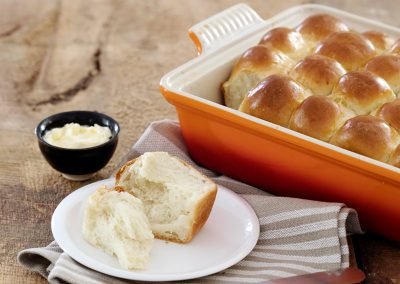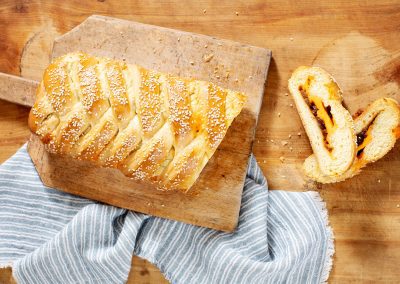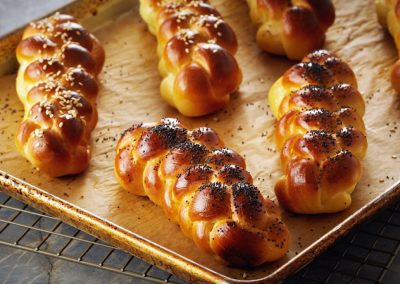Sloppy Ciabatta Bread
Introduction
About this Recipe
Recipe from Baking Day with Anna Olson
Appetite by Random House, 2020
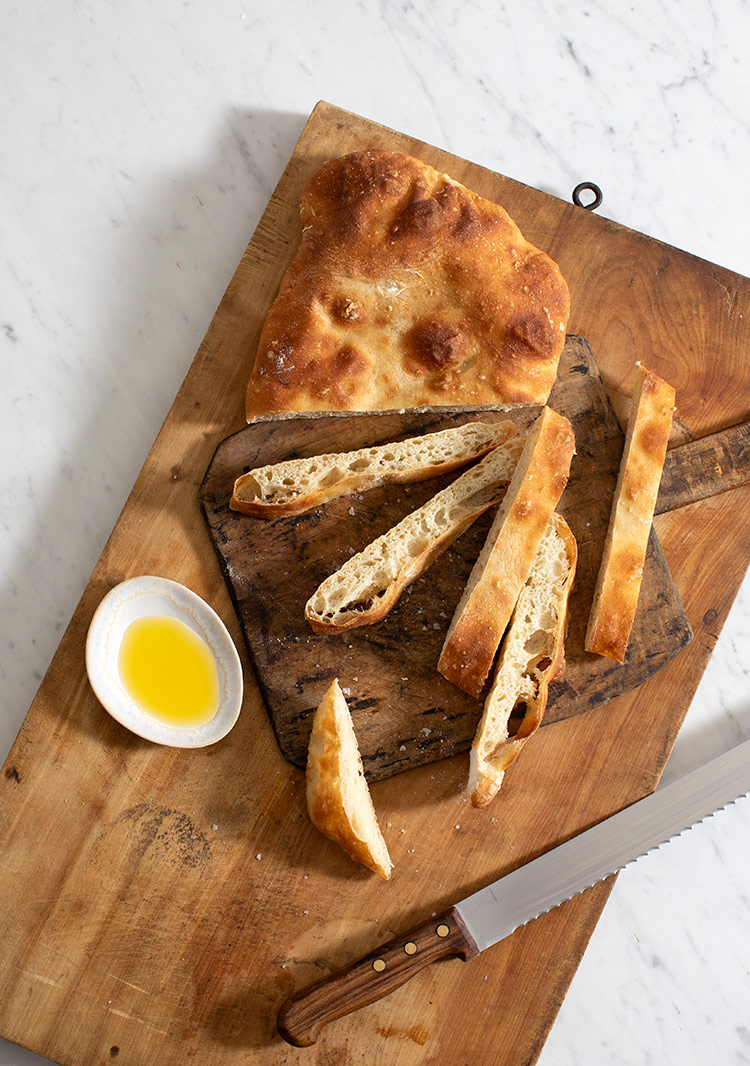
Ingredients
Biga (12 to 18 hours ahead):
- ½ cup (125 mL) lukewarm water
- ½ cup (75 g) bread flour
- ½ cup (75 g) whole wheat flour
- Pinch of instant dry yeast
Dough:
- 2⅓ cups (580 mL) lukewarm water
- 3¼ cups (485 g) bread flour, plus more for shaping
- 1½ tsp instant dry yeast
- 2 tsp coarse salt
When you first work the biga into the water for the bread dough, there is no better tool than your hands. Squidging that biga around in the bowl just makes you feel like a kid . . . too much fun!
To make this recipe as a contemporary no-knead bread, prepare the wet, sloppy dough as above and let it rise for 2 hours. Then pop an enamel cast-iron pot and lid in the 450°F (230°C) oven to preheat while you shape the dough (just a single loaf) into a round using lots of flour. Cover for 20 minutes. Gently tip the well-floured loaf into the hot pot, cover and bake for 30 minutes, then uncover to bake an additional 15 minutes. Turn the dough out onto a rack to cool.

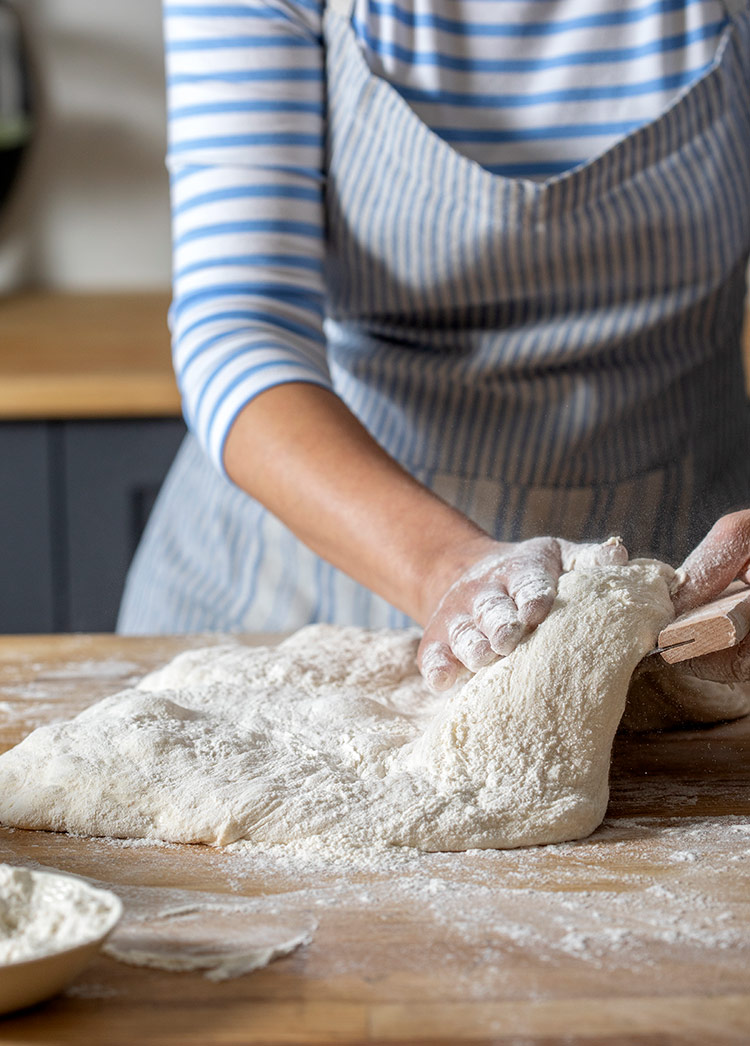
Step by Step Instructions
Step 1
For the biga, stir the water, bread flour, whole wheat flour and yeast together in a bowl with a wooden spoon until evenly blended (the biga will be quite dense). Cover and set this starter aside on the counter for 12 to 18 hours—it will be soft and bubbly by this time, and the longer it sits, the better the flavour of the bread.
Step 2
For the dough, stir the biga and water in a large bowl so that the biga breaks down a little and becomes softer (but it won’t fully dissolve). Add the flour and yeast and mix by hand with a wooden spoon. The batter will be very wet, not like a traditional bread dough that can be kneaded by hand on the counter—this one will have to stay in the bowl. Once combined, let the dough sit, uncovered, for 15 minutes, then add the salt and stir in vigorously until the dough feels stretchy.
Step 3
Cover the bowl with plastic wrap and let sit on the counter for 2 hours, until doubled in size. After the first hour, knock the dough down by patting it with a wooden spoon 4 to 5 times and then re-cover it.
Step 4
Line two baking trays with parchment paper and dust them with flour. On a well-floured work surface, turn the dough out (it will be very stretchy and still sticky) (1). Using your hands and/or a bench scraper, and lots of flour, divide the dough in half (2) and shape each of the pieces into a rough 8 × 12-inch (20 × 30 cm) rectangle about 1½ inches (3.5 cm) tall. Transfer each piece to a baking tray (3) and let the dough rest for 30 minutes, uncovered (4).
Step 5
Preheat the oven to 450°F (230°C). Dust the tops of the loaves with flour and bake the bread for about 30 minutes, until an even golden brown. Turn off the oven and leave the bread in for 10 minutes (this sets the crust). Transfer the loaves from the baking trays to a cooling rack for at least 15 minutes before slicing. The bread is best enjoyed the day it is baked, but is great for toasting or grilling the next day.
